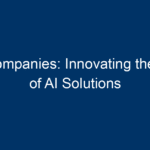Einstein’s General Relativity is more than a scientific theory; it’s a profound insight into the very fabric of the universe. Since its inception over a century ago, general relativity has reshaped our understanding of gravity, space, and time. By delving into this fascinating topic, we can unlock the secrets of the cosmos and understand phenomena that govern our existence.
1. The Birth of General Relativity
In 1915, Albert Einstein introduced the world to his groundbreaking theory of general relativity. Building on his earlier work, the special theory of relativity, general relativity expanded the concept of gravity beyond the static, unchanging view of Newtonian physics. Where Newton described gravity as a force acting at a distance, Einstein proposed that gravity is a curvature of spacetime caused by mass.
1.1 The Concept of Spacetime
To fully grasp general relativity, one must understand the concept of spacetime. Instead of treating space and time as separate entities, Einstein fused them into a four-dimensional continuum. This integration allows us to visualize how massive objects distort this continuum, affecting the motion of other objects. Picture a large, heavy ball placed on a trampoline; it causes the surface to curve, demonstrating how mass influences the geometry of space.
1.2 The Equivalence Principle
At the heart of general relativity lies the equivalence principle, which states that gravitational acceleration is indistinguishable from acceleration caused by other forces. For instance, if you’re in a sealed room and feel weightless, you can’t discern whether you’re floating in space or in free fall under gravity. This principle forms the basis for understanding how mass and energy interact with the fabric of spacetime.
2. Key Predictions of General Relativity
General relativity offers several predictions that have been confirmed by experimental evidence, revolutionizing our understanding of the universe.
2.1 Light Curvature
One of the most famous predictions is that light bends in the presence of gravity. During a solar eclipse in 1919, Sir Arthur Eddington observed stars appearing slightly displaced from their usual positions due to the Sun’s gravitational field, providing the first empirical evidence for general relativity.
2.2 Gravitational Waves
In 2015, scientists confirmed the existence of gravitational waves—ripples in spacetime caused by violent cosmic events like merging black holes. This breakthrough validated another critical aspect of general relativity and opened a new field of astrophysical research.
2.3 Black Holes and Event Horizons
General relativity also predicts the existence of black holes—regions of space where the gravitational pull is so intense that nothing, not even light, can escape. Their boundaries, known as event horizons, mark the point of no return for objects entering their grasp.
3. Theoretical Implications of General Relativity
General relativity has broad implications for our understanding of the universe, affecting various aspects of cosmology and astrophysics.
3.1 Cosmic Expansion
In the 1920s, astronomer Edwin Hubble discovered that galaxies are moving away from us, suggesting that the universe is expanding. This observation aligns with general relativity’s prediction of an evolving universe, leading to the Big Bang theory, which posits that the universe originated from a singular, infinitely dense point.
3.2 Dark Matter and Dark Energy
General relativity also plays a critical role in contemporary astrophysics. Observations indicate that visible matter accounts for only a fraction of the universe’s mass; the rest is dark matter and dark energy—mysterious components that influence cosmic structures and the rate of the universe’s expansion, yet remain largely unobserved.
4. General Relativity in Everyday Life
The principles of general relativity extend beyond the vast cosmos; they also have practical applications in our daily lives.
4.1 GPS Technology
Global Positioning System (GPS) satellites rely on precise timing to deliver accurate location data. However, the effects of both special and general relativity must be accounted for, as time flows differently at high altitudes and speeds compared to Earth’s surface. Without these corrections, GPS data would be inaccurate, causing errors of up to several kilometers.
4.2 Advanced Scientific Research
General relativity continues to influence research in various fields, from astrophysics to quantum mechanics. Scientists utilize its principles to study gravitational interactions, contributing to advancements in technology and our understanding of the universe.
5. Challenges and Future Directions
Despite its successes, general relativity faces challenges, particularly when reconciled with quantum mechanics. The quest for a unified theory, often referred to as quantum gravity, remains one of the foremost pursuits in theoretical physics. Researchers are exploring various approaches, including string theory and loop quantum gravity, to bridge the gap between these two foundational theories.
5.1 Testing General Relativity Further
As technology advances, scientists continue to test general relativity under extreme conditions. Experiments at the Large Hadron Collider (LHC) and observatories like the Event Horizon Telescope will provide deeper insights into gravitational effects. The ongoing exploration of better observational techniques will likely yield exciting discoveries, further solidifying or questioning aspects of Einstein’s groundbreaking work.
Conclusion: Embracing the Journey of Discovery
General relativity is not just a collection of equations; it is a profound framework that allows us to explore and comprehend the complexities of our universe. From the elegant curvature of spacetime to the enigmatic phenomena of black holes, the influence of general relativity stretches across theoretical concepts and practical applications.
As we delve further into the mysteries of the universe, general relativity will continue to guide us on this incredible journey of discovery. Whether through advancements in technology or the quest for a unified theory, the legacy of Einstein’s work remains vibrant, inspiring future generations of scientists and curious individuals alike.
Actionable Insights
- Stay Curious: Engage with books, lectures, and documentaries about general relativity to expand your understanding of the universe.
- Follow Emerging Research: Keep an eye on advancements in gravitational research and technologies like GPS that depend on the principles of general relativity.
- Participate in Discussions: Join forums or academic groups to discuss concepts in astrophysics and cosmology related to general relativity.
By embracing the knowledge of general relativity, we can continue to unravel the universe’s secrets, enriching our understanding of the cosmos and our place within it.




